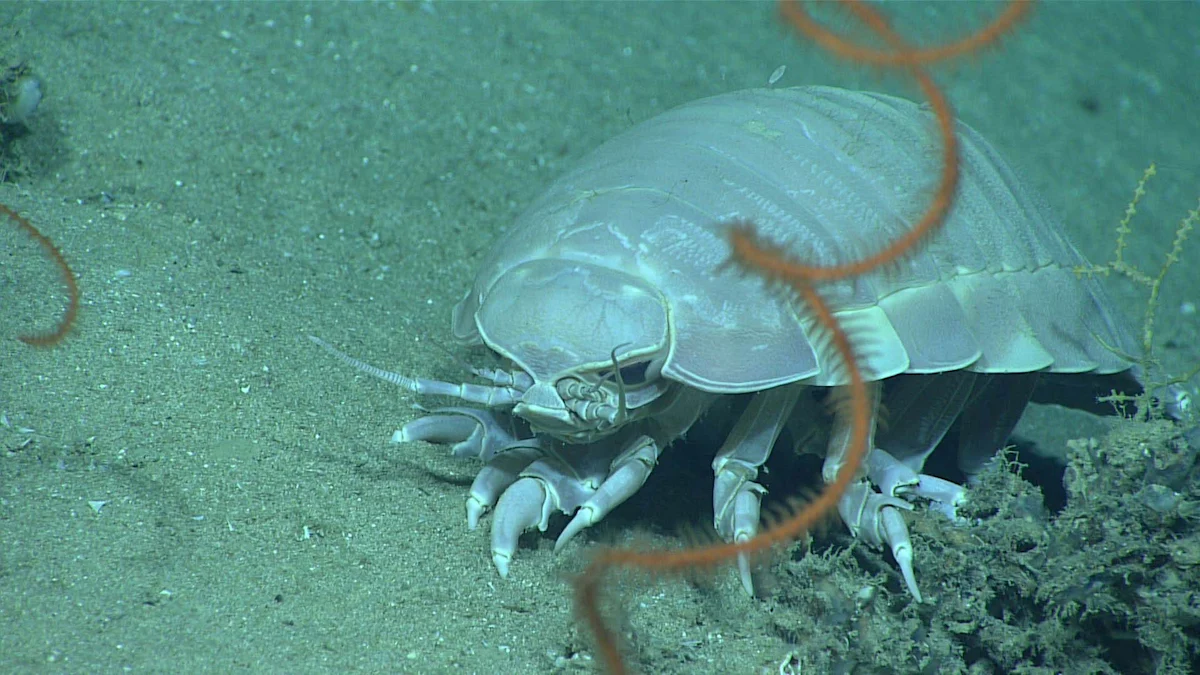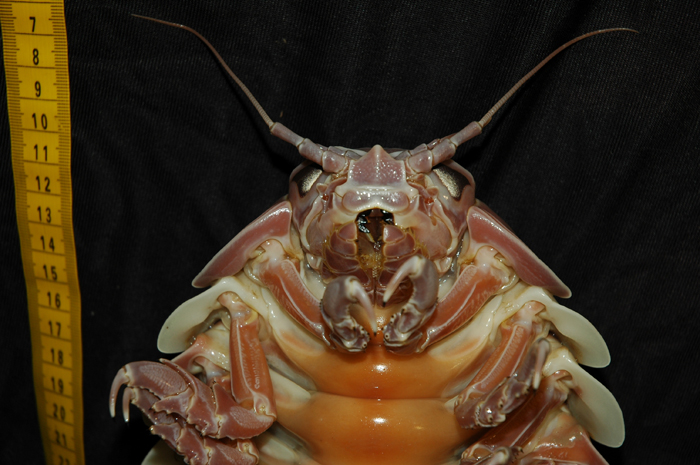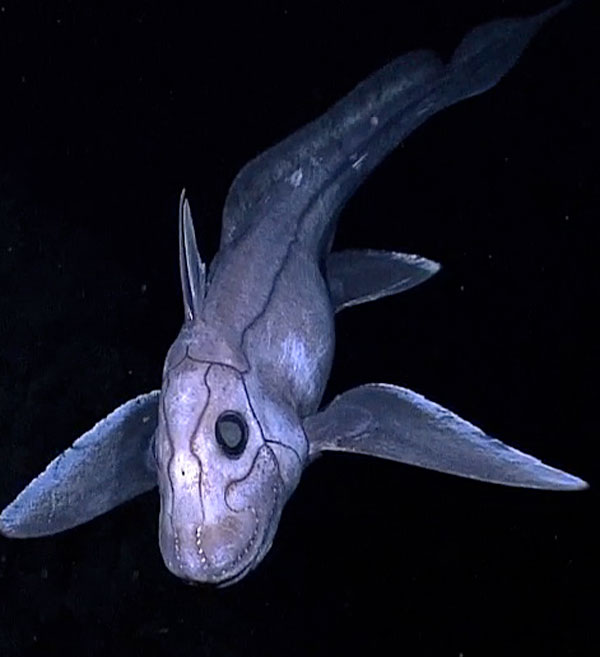These Creepy Ocean Animals Will Make You Say “Nope”
It’s Friday the 13th, and these frightening species are definitely...on-theme.
3 Minute Read

We’ve got some news to share: while Friday the 13th only comes around a few times a year, these ocean-dwelling animals exist as their creepy selves all year round. From a crustacean the size of a small cat to a squid with the word ‘vampire’ in its name…you’re in for a frightfully disturbing read if you haven’t seen these creatures before.
Giant Isopod

- Scientific name: Bathynomus giganteus
- If you get the heebie jeebies from creepy-crawly things…um…don’t look. This enormous crustacean is actually cousins with land organisms like the pillbug (or roly-poly), and over time, it’s thought to have adapted to protect its body from the alarmingly high pressure levels that manifest with the deep sea.
Vampire Squid
- Scientific name: Vampyroteuthis infernalis
- Apparently, the literal translation of this species’ scientific name is “the vampire from hell.” So we included it in this post, for obvious reasons (cue creepy vampire-esque musical accompaniment). You may be shocked to learn that this animal isn’t all that vicious or hellish after all. Its primary source of food is actually tiny drifting particles, called “marine snow.” Other than that, it pretty much floats along slowly and minds its own business.
Goblin Shark
- Scientific name: Mitsukurina owstoni
- With an extremely goblin-like snout that extends far beyond its mouth, this creepy species has an alarming set of chompers. Ligaments attached to the jawline enable it to stretch out and extend its mouth, grabbing its prey quickly and pulling it back into its jaws before it’s able to escape.
Viperfish
- Scientific name: Chauliodus sloani
- With an elongated lower jaw, this fish is a sight to see. Brilliantly frightening, the sides of its body are lined with luminescent organs. Its trademark (much like the angler fish) is a light-producing photophore at the tip of its lengthy spine, which produces light that flashes on and off to attract unsuspecting small prey.
Frilled Shark
- Scientific name: Chlamydoselachus anguineus
- If sea monsters exist, they probably look a little something like this. With 25 rows of piercing teeth, this ancient creature also has ‘fluffy’ edges around its gills…but we don’t recommend trying to cuddle it. It’s probably not the best idea, unless you’d like a serrated chomp mark comparable to nothing you’ve seen before. Not to worry, though; these sharks are typically bottom-dwellers, so the likelihood of running into one on the shoreline is slim to none!
Terrible-Claw Lobster
- Scientific name: Dinochelus ausubeli
- Nothing makes you say “nope” quite like a lobster that seems to have a chainsaw for an arm. However, you may be surprised to learn that this creature, in all its 31mm of bodily length, is actually fully blind. So, while it may appear horrifying in photos, the tiny specimen could likely do you no more harm than a typical prawn. Why exactly this species presents with one utterly distinct appendage is still up for debate in the scientific community, but one thing’s for sure: they’re a jaw-droppingly brilliant sight to see!
Chimaera

- Scientific name: Chimaeriformes
- While the cartilaginous anatomical makeup of this shark may seem similar to its counterparts within the shark and ray family, its appearance can take many people aback. After all, it’s nicknamed “ghost shark” for a reason…they’re definitely fascinating, but they appear like phantom swimmers, lurking along the sea floor of the deep, dark sea.